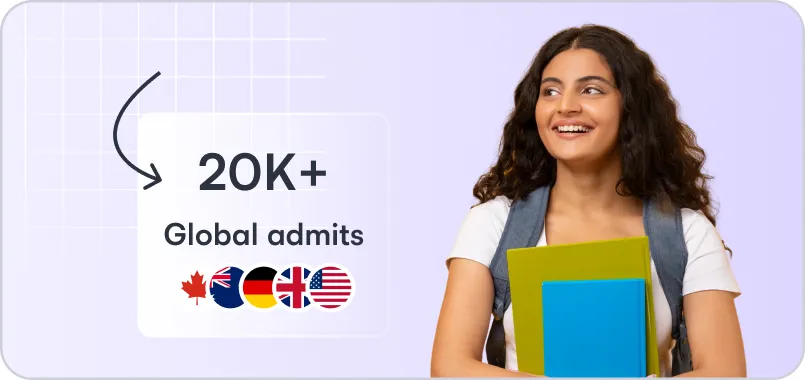Standardised tests can make or break your applications. Imagine this scenario: you have an identical profile with someone, competing for the same spot at a top university. Similar GPA, extracurriculars, etc. But when there’s a tie, the one who has a good GMAT/ GRE score, will make the cut. Would you want to give up on your dream university for one test score? No, right?
Check out these top exams required to study a Master's in the USA:
GRE (Graduate Record Examinations)
The GRE is a general test taken by students applying to a wide range of graduate programs, including STEM fields. It assesses your analytical writing, verbal reasoning, and quantitative reasoning skills, key abilities for success in rigorous graduate studies. We focus on services for STEM applicants, so our guidance is designed with your needs in mind.
The GRE test is divided into the following sections, each designed to evaluate a specific skill set:
|
Section
|
Number of Questions
|
Duration
|
Score Range
|
|
Analytical Writing
|
1 task (Issue Task)
|
30 minutes
|
0 - 6
|
|
Verbal Reasoning
|
27 questions
|
41 minutes
|
130 - 170
|
|
Quantitative Reasoning
|
27 questions
|
47 minutes
|
130 - 170
|
|
Total Duration
|
—
|
1 hour 58 minutes
|
260 - 340
|
GMAT Focus Edition (Graduate Management Admission Test)
The GMAT Focus Edition is required for business programs such as accounting, management, and HR. The test evaluates quantitative reasoning, verbal reasoning, and data insights and includes features like question review & edit, flexible section order selection, and customizable score sending.
The GMAT exam is structured into the following sections, each assessing a different skill area:
|
Section
|
Number of Questions
|
Duration
|
Score Range
|
|
Quantitative Reasoning
|
21
|
45 minutes
|
60 - 90
|
|
Verbal Reasoning
|
23
|
45 minutes
|
60 - 90
|
|
Data Insights
|
20
|
45 minutes
|
60 - 90
|
|
Total Duration
|
-
|
2 hours 15 minutes (+10 min optional break)
|
205 - 805
|
LSAT (Law School Admission Test)
If you're planning to attend law school, the LSAT is the way to go. It evaluates your analytical writing, reading comprehension, and logical reasoning, testing your ability to think critically and argue effectively.
The Law School Admission Test has several sections, each meant to check a key skill you'll need in law school.
|
Section
|
Number of Questions
|
Duration
|
Score Range
|
|
Logical Reasoning
|
24 - 26 per section (2 sections)
|
35 minutes each
|
120 - 180
|
|
Analytical Reasoning
|
23 - 24
|
35 minutes
|
120 - 180
|
|
Reading Comprehension
|
26 - 28
|
35 minutes
|
120 - 180
|
|
Unscored Experimental Section
|
Varies
|
35 minutes
|
Not scored
|
|
Writing Sample
|
1 Essay
|
35 minutes
|
Not scored
|
|
Total Duration
|
-
|
4 hours
|
120 - 180
|
MCAT (Medical College Admission Test)
If you're applying to medical school in the US, you need to take the MCAT. It evaluates your understanding of biological and biochemical systems, chemistry and physics, critical reasoning, and psychological and social sciences.
The below given sections together form the MCAT exam:
|
Section
|
Number of Questions
|
Duration
|
Score Range
|
|
Biological & Biochemical Systems
|
59
|
95 minutes
|
118 - 132
|
|
Chemical & Physical Systems
|
59
|
95 minutes
|
118 - 132
|
|
Critical Analysis & Reasoning
|
53
|
90 minutes
|
118 - 132
|
|
Psychological & Social Foundations
|
59
|
95 minutes
|
118 - 132
|
|
Total Duration
|
-
|
7 hours 30 minutes
|
472 - 528
|








